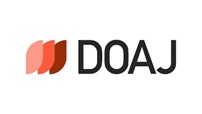Abstract
The present research examined the interesting but less attended effects of pride- and surprise-tagged money on consumers’ spending decisions. Focusing on the unexpected money received in their daily life, we explored recipient’s judgments and responses toward pride-tagged money versus surprise-tagged, and identified differences in types of recipient’s consumption and spending behaviors between the pride- tagged money and the surprise-tagged money. Consumers tend to use the money associated with pride (vs. surprise) to reward their invested effort; as a result, they were more likely to buy a personal gift. Moreover, in the context of self-gift, consumers with pride-tagged money have showed a bigger positive difference between the intent to buy individual self-expressive products and the intent to buy social self-expressive products than those with surprise-tagged money. And the receipt of pride-tagged money activates motivation to express one’s individual self. Consumers who have received a sum of extra money tend to add the money into the current spendable income account and broaden the array of product category. And consumers with high arousal level of surprise triggered by receiving a sum of unpredictable money because of good luck show a smaller difference between the intent to buy individual self-expressive product and the intent to buy social self-expressive product than those with low level arousal in pride. Therefore, marketers should advertise their products in the respects of individual self-expression when their customers have pride-tagged money, and should advertise their products in the respects of social self-identity when they have surprise-tagged money by winning a large sum of unpredicted money like lottery winning.
Recommended Citation
Liu, Cong and Choi, Nak Hwan
(2015)
"The Roles of Money’s Pride and Surprise Tag on the Use of Money,"
Asia Marketing Journal: Vol. 17
:
Iss.
3
, Article 1.
Available at: https://doi.org/10.15830/amj.2015.17.3.1
Creative Commons License

This work is licensed under a Creative Commons Attribution 4.0 License.





